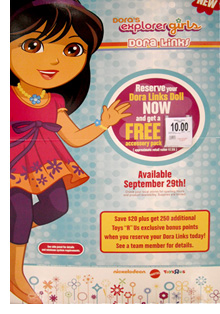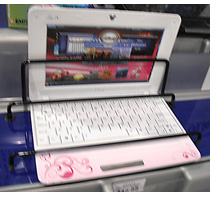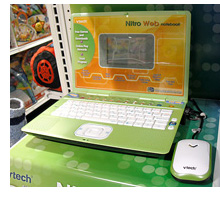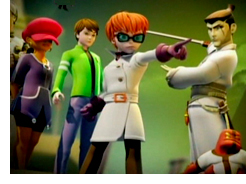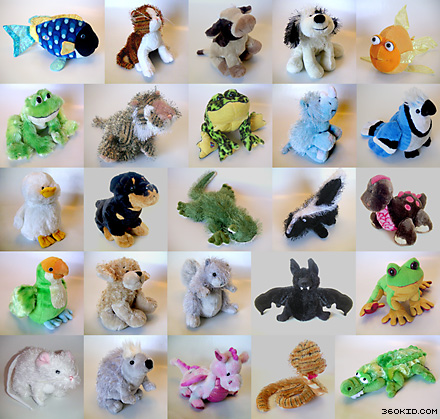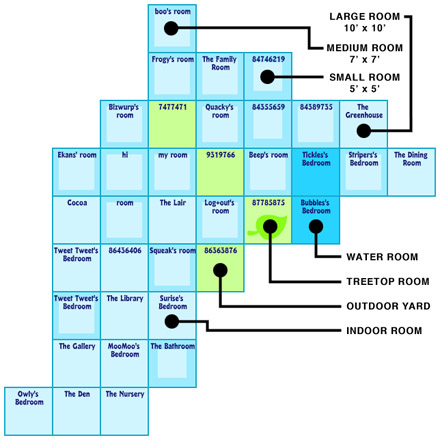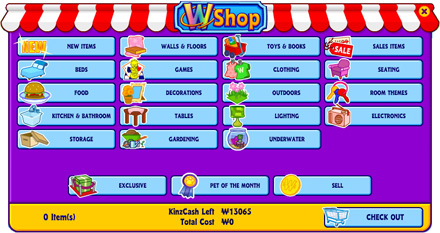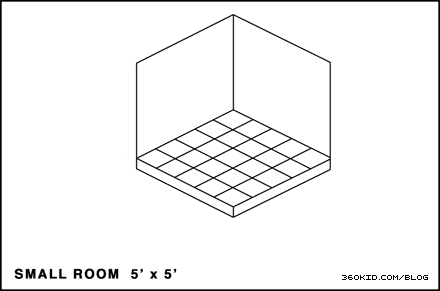Friday, November 6th, 2009
‘Tis the season for a whole new crop of toys to find its way into your home. I’ve noticed that a number of “must have” toy lists have been announced in the past few weeks. These lists include:
- FunFare Magazine’s Hot Dozen Toy List
- KMart’s Fab 15 Toy List
- Time to Play’s Most Wanted List
- The Toys R Us Fabulous 15 List
I thought it would be interesting to see what could be learned by mashing together all of these lists. After doing so, a few trends did make themselves apparent. From this new mashup list of 44 toys, I could see:
- a little more than half of the toys are technology-based
- a little less than a quarter of this list uses well known branded characters
- four of the toys cited involve some sort of virtual world along with a tangible toy (Dora’s Explorer Girls, Littlest Pet Shop Adoption Center, Liv Dolls, Nanovor Nanoscope)
- only two toys on the list could be considered educational (Color Me a Song, Zippity Learning System)
- two toys on the list are video games (Beatles Rock Band, Wii Sports Resort)
I also found that three toys in my mashup list were recommended on three out of the four separate toy lists:
| Toy | Maker | Age | Cost | FunFare | Kmart | Time 2 Play | Toys R Us |
|---|---|---|---|---|---|---|---|
| Bakugan 7-in-1 Maxus Dragonoid | Spin Master | 5+ | $39.99 | * | * | * | |
| Nerf N-Strike Raider Rapid Fire CS 35 | Hasbro | 6+ | $29.99 | * | * | * | |
| Zhu Zhu Pets | Cepia | 4+ | $9.99 | * | * | * |
Bakugan 7-in-1 Maxus Dragonoid is a toy that folds up, expands, and connects to build a much larger toy. This toy feels a bit like a mashup itself between Transformers and Pokemon. From what I’ve heard from classroom teachers, many 8 year old boys are buzzing about this product.
The Nerf Strike Raider is a full sized, automatic toy machine gun and looks pretty threatening. The Nerf line is a very popular toy product for Hasbro, but I wish that toy guns didn’t make it to the list!
Zhu Zhu Pets are little robotic hamsters that react in some way, with noise or motion, when you touch them. These critters can be sent to live in a super hampster wonderland, similar to the real world animal Habitrail concept, complete with its own hampster ball. This product is just a little misleading. The price of the pet itself is really affordable! What parents will most likely miss is that if you buy the pet, they will also end up spending a fortune on all the accessories. None-the-less, I think this toy will be the hot product for kids under the age of 10, if you can find it. It already looks like stores are already all sold out of this product.
This next list below includes toys found on two of the four lists:
| Toy | Maker | Age | Cost | FunFare | Kmart | Time 2 Play | Toys R Us |
|---|---|---|---|---|---|---|---|
| ChixOs Design-A-Luxury Loft | Spin Master | 4+ | $29.99 | * | * | ||
| Crayola Crayon Town | Wild Planet | 3+ | $9.99 | * | * | ||
| Disney NetPal | Disney/ASUS | 6+ | $349.99 | * | * | ||
| Girl Gourmet Sweets Candy Jewelry Factory | Jakks Pacific | 8+ | $29.99 | * | * | ||
| Laugh & Learn Learning Farm | Fisher-Price | 6m – 36m | $79.99 | * | * | ||
| Printies Design Studio | Techno Source | 6+ | $19.99 | * | * | ||
| Transformers Constructicon Devastator | Hasbro | 5+ | $99.99 | * | * |
The toy I think will be a big seller from this list is the Girl Gourmet Sweets Candy Jewelry Factory by Jakks Pacific. It’s a little like the old Easy Bake Oven, but instead of making baked goods, it makes candy jewelry. The catch to be aware of with this product is that it does not come with the special 40 watt bulb you need to make the product work. It has to be purchased separately.
I’m also watching the Printies Design Studio by Techno Source. This is a clever product where a child can create all kinds of unique crafts using a specially prepared (and pre-perfed) paper that your child can design, print, cut out, and then stuff with cotton. It uses low end color printers, like the kind you most people have at home.
Some surprises? First, I was surprised to see the LeapFrog TAG & TAG Jr. reading systems did not make it onto any list. Once I realized that LeapFrog was missing from the list I then noted that not a single toy from VTech was on the list either. Maybe just a bad year for electronic learning products? Also, WowWee, the amazing robotic toy experts did not have a single mention as well. The Nintendo DS and DSi were not on the list either, but that may be more of an issue with toy experts not specializing in reviewing software and gaming platforms than anything else.
I was also surprised not to see more website toy tie ins on the list. There certainly are a number of them out there, but not so many captured on these more traditional toy lists.
If you are interested in my complete mashup toy list, you can download a copy as an Excel file here. Note the tabs on the bottom of the spreadsheet, I have arranged the list by product, age, cost, etc.
Let me know if you see any other trends. I’d enjoy hearing what toys are on the top of your list!


